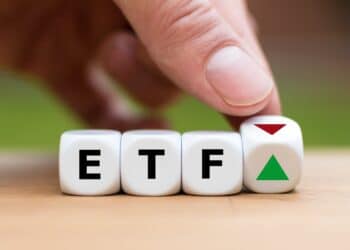Nicholas Ali outlines the importance of lodging the correct Australian Taxation Office (ATO) form before commencing a pension.
It is crucial for self-managed super fund (SMSF) members and their financial advisers to ensure a valid Section 290-170 (s290-170) Notice of Intention to claim a tax deduction is submitted, received and acknowledged by the trustee/s of the fund. This must occur before the member takes their benefit from a fund in the form of a lump sum, pension or rolls over to another superannuation fund.
If a member does not provide a valid s290-170 beforehand, they are likely to lose the right to claim a tax deduction for those personal contributions.
To be valid, the s290-170 notice must be provided to the trustee before the person submits their tax return, and no later than 30 June of the financial year following the contribution.
The notice will be invalid if:
- the person is no longer a member of the fund that receives the notice.
- the trustee no longer holds the contribution.
- the trustee has begun to pay an income stream from the member's account.
As per Taxation Ruling 2010/1, once a pension commences in a superannuation fund for a member, an s290-170 deduction notice can only cover contributions made to a member's superannuation account after the commencement of the pension.
It does not matter if only part of a member's accumulation account is used to commence a pension and there is still enough money in accumulation to cover the deductible contribution.
If a valid notice has not been submitted before the pension commences, no deduction is allowed for those contributions made prior to the pension commencement.
This may occur where a member may have implemented a transition to retirement pension strategy, and is looking to 'recast' the income stream to accommodate personal deductible contributions made to the fund at the end of the financial year to ensure a personal tax deduction.
If a valid s290-170 tax deduction notice in respect of the contributions is not made prior to the pension commencing, then the contributions will not be considered personal deductible contributions, and no personal deduction can be claimed.
This may have a dramatic impact on the client's individual circumstances, culminating in higher personal tax, and may even lead to excess contributions tax.
Case study
Richard, aged 55, is self-employed and a member of a large retail superannuation fund. He contacts his financial adviser who recommends he make a personal deductible contribution to superannuation of $50,000 in June of the 2010/11 financial year.
Richard is also financial advised to make a separate non-concessional contribution of $450,000 in June of the year (2010/11), and then roll the benefit over to his SMSF that will be established early in the new financial year (2011/12) as he is looking to commence a transition to retirement pension strategy in the 2011/12 financial year from his SMSF.
Furthermore, Richard's marginal tax rate is 38.5 per cent (including Medicare levy).
Richard's financial adviser receives a cheque for $50,000 and a cheque for $450,000 from Richard and remits them to the retail superannuation fund. He includes a covering letter that states the cheque for $50,000 is to be a concessional contribution and the cheque for $450,000 is to be a non-concessional contribution.
Unfortunately in this instance the receiving retail fund cannot differentiate between personal concessional contributions and employer concessional contributions, and does not issue s290-170 notices – it rather relies on the client or financial adviser providing this with the concessional contribution.
Therefore the $50,000 concessional contribution is incorrectly processed as an employer concessional contribution and the retail fund does not issue a s290 Acknowledgement Form.
However, Richard is unaware of this and rolls over the benefit to his newly established SMSF and commences a pension. Whilst successor funds are now able to accept a Notice of Intent to claim a deduction for a member, Richard has started a pension.
As such, any s290-170 notice of intent to claim a tax deduction lodged after this will be invalid. When Richard lodges his personal tax return, the Australian Taxation Office disallows the tax deduction of $50,000, as there is no valid s290-170 notice prior to rolling the benefit over and/or commencing a pension.
The $50,000 is then re-classified as a non-concessional contribution. As such, Richard's non-concessional contributions for the 2010/11 financial year are $500,000. As each contribution is not above the relevant cap, the retail fund was not obliged to reject the contributions.
For Richard, this means the $50,000 will not be a tax deduction and his taxable income will be increased by $50,000.
At Richard's marginal tax rate, this equates to an additional $50,000 x 38.5 per cent = $19,250 in personal tax.
Furthermore, as Richard has contributed more than the non-concessional cap (using the bring-forward rule) of $450,000, the excess non-concessional contribution of $50,000 will be subject to $50,000 x 46.5 per cent = $23,250 excess non-concessional contributions tax.
Therefore the total tax on the $50,000 is $42,500 or an effective tax rate of 85 per cent!
Financial advisers, fund members and trustees need to be extremely vigilant when making contributions to superannuation with the intent of claiming a tax deduction, especially where the deductible contribution is being made to a retail or public offer fund, then rolled over to an SMSF.
It is imperative a valid s290-170 notice has been provided before a pension starts. There is very little that can be done after the fact.
Nicholas Ali is a technical services specialist at Super Concepts.





